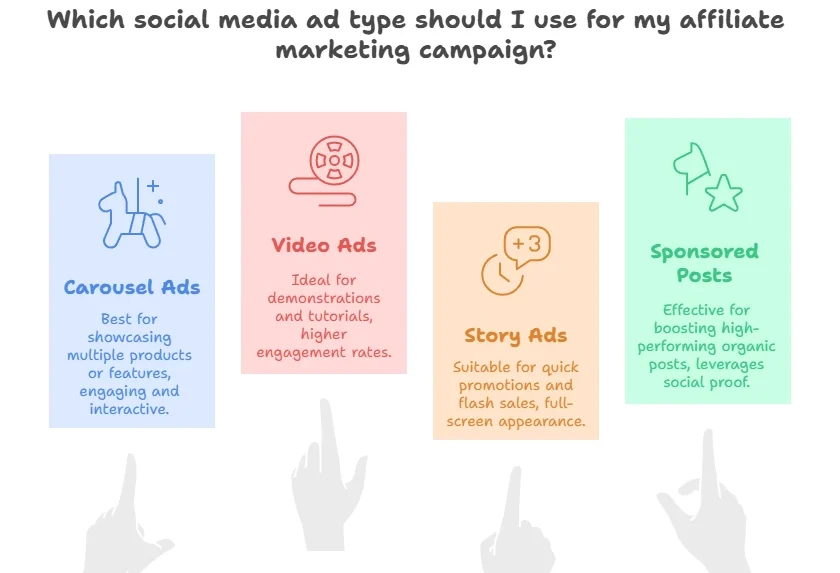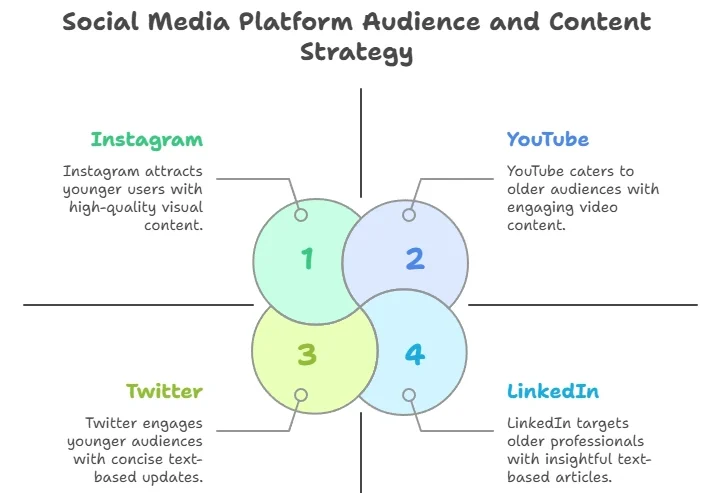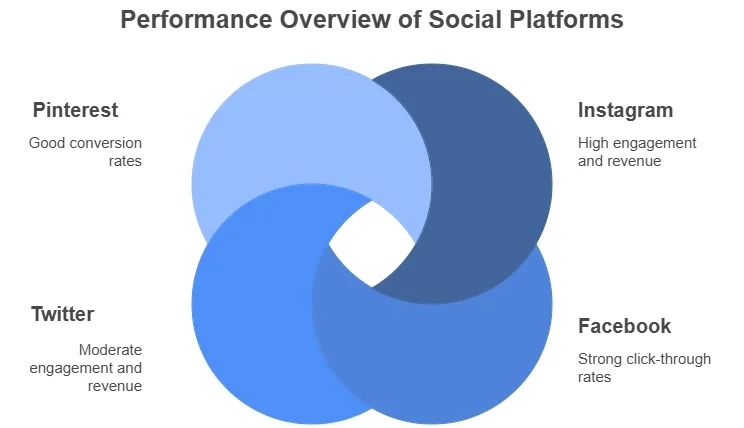 ATTENTION: Want to Learn Affiliate Marketing from Successful Affiliates?
Join this FREE community where successful marketers share their secrets!
Learn directly from highly successful affiliate marketers
Access free, actionable training content regularly
Connect with an active community of over 5,000 members
Network with multiple six-figure earning affiliates
Get your questions answered by real experts
JOIN FREE NOW!
ATTENTION: Want to Learn Affiliate Marketing from Successful Affiliates?
Join this FREE community where successful marketers share their secrets!
Learn directly from highly successful affiliate marketers
Access free, actionable training content regularly
Connect with an active community of over 5,000 members
Network with multiple six-figure earning affiliates
Get your questions answered by real experts
JOIN FREE NOW!
Affiliate marketing thrives on trust. When you promote products or services, your audience needs to feel confident in your recommendations. Social media marketing is a powerful tool to build this trust and establish yourself as an authority in your niche. By regularly sharing valuable content, engaging with followers, and responding to inquiries, you create a community that looks to you for guidance.
Your social media profiles should reflect your niche clearly. Whether you focus on tech gadgets, fashion, health, or finance, your content must align consistently with your affiliate offerings. For example, posting product reviews, helpful tips, and behind-the-scenes looks at the products you promote can strengthen audience trust. Authenticity is key: never oversell or promote something you don’t believe in.
Choosing the Right Social Media Platforms for Affiliate Promotions
Not all social media platforms yield the same results for affiliate marketing. Knowing which platforms suit your target audience is vital for efficiency and maximizing returns.
- Instagram: Great for visual products like fashion, beauty, and lifestyle. Instagram Stories and Reels provide opportunities for affiliate links, especially with the swipe-up feature or link stickers.
- Facebook: Best for community-building through Groups and Pages. You can share detailed posts and run targeted ads that drive traffic to affiliate offers.
- YouTube: Perfect for tutorials, unboxings, and product reviews. You can place affiliate links directly in video descriptions and engage viewers with in-depth content.
- Pinterest: Excellent for evergreen content discovery, particularly in niches such as home décor, DIY, and fitness. Pins with affiliate links can generate passive income over time.
- Twitter: Ideal for quick updates, flash sales, and sharing affiliate links with promotional codes.
Focus on the platforms where your audience spends the most time and tailor content accordingly to boost engagement and conversions.
Crafting Content that Converts Followers into Buyers
The key to success lies in creating content that educates and nudges your audience toward making a purchase without appearing overly promotional. Combining storytelling with practical information helps people relate to the products.
- Use product reviews and testimonials: Share honest insights about the products you promote to help your followers make informed choices.
- Create how-to guides and tutorials: Show your audience how to use the product effectively in real-life scenarios.
- Leverage live videos and Q&A sessions: Engage in real-time, answer questions, and provide additional value.
Make sure your posts include clear calls-to-action (CTAs). For example, urging followers to “check out the link in the bio” or “use this exclusive promo code” can increase clicks and sales.
Utilizing Paid Social Media Advertising for Accelerated Growth
Organic growth is important, but paid social media advertising can significantly boost your affiliate marketing results. Platforms like Facebook and Instagram allow targeted ads based on demographics, interests, and behaviors, ensuring your affiliate offers reach the right audience.
Here’s a quick overview of social media ad types ideal for affiliate marketing:
| Ad Type | Best For | Benefits |
|---|---|---|
| Carousel Ads | Showcasing multiple products or features | Engaging and interactive; increases time spent on the ad |
| Video Ads | Demonstrations and tutorials | Higher engagement rates; visual storytelling |
| Story Ads | Quick promotions and flash sales | Appears full-screen; taps into urgency |
| Sponsored Posts | Boosting existing high-performing organic posts | Leverages social proof; extends reach |

Keep in mind that testing and tweaking your ad creatives, copy, and targeting is essential to find the winning formula that drives affiliate sales.
Tracking Performance and Optimizing for Better Results
To succeed with social media marketing for affiliate marketing, tracking key metrics is non-negotiable. Use tools provided by social platforms and third-party analytics to monitor:
- Click-through rates (CTR) on your affiliate links
- Conversion rates from social traffic
- Engagement metrics like likes, comments, shares, and saves
- Follower growth and demographics
Refine your strategies regularly based on data insights. For example, if you notice that video content generates higher conversions, increase video production aligned with those trends.
For more in-depth strategies and resources on affiliate marketing, you might find Affiliate Marketer Training an excellent resource. It offers comprehensive guides tailored to social media marketing success.
By engaging your audience thoughtfully, selecting the right platforms, crafting valuable content, utilizing paid ads wisely, and continuously analyzing performance metrics, you can unlock the full potential of social media marketing to boost your affiliate marketing success.
Choosing the Best Social Platforms for Affiliate Campaigns
When you dive into affiliate marketing, picking the right social media platforms can make or break your success. Each platform has its own distinct audience, content style, and engagement patterns. To get the best results, you want to match your affiliate products with the social networks where your ideal customers hang out. This strategy not only boosts conversions but helps you build authentic connections and trust with your followers.
Consider Your Product Type and Audience Profile
Start by understanding your product and who it appeals to. Are you promoting tech gadgets, fashion, health supplements, or digital courses? Different products have different natural fits on social channels. For example, visually striking products like clothing and accessories perform well on image-focused platforms like Instagram or Pinterest. Meanwhile, tech and educational products often gain traction on YouTube or LinkedIn.
Next, think about the demographics of each platform:
| Platform | Main Audience | Ideal Content Type |
|---|---|---|
| 18-34 years, visual and lifestyle-focused | High-quality images, stories, reels | |
| 25-54 years, broad demographics | Posts, videos, groups | |
| Majority female, planning and discovery | Pinboards, infographics, how-tos | |
| YouTube | All ages, interested in video tutorials and reviews | Video content, unboxing, demonstrations |
| Professionals, B2B audience | Articles, case studies, industry insights | |
| 18-49 years, real-time news and trends | Short posts, conversations, links |

Match Content Style with Platform Strengths
Creating content that performs well means playing to each platform’s core strengths. If you’re focusing on Instagram, invest in visually appealing photos and short, engaging videos like reels. On YouTube, long-form content such as tutorials, reviews, or product demos work best. For Pinterest, design informative and inspirational pins that guide users towards your affiliate product.
You can also mix and cross-promote content across channels. For instance, share snippets of your YouTube video on your Instagram Stories to funnel followers to your channel, where they’re more likely to take action on your affiliate links.
Use Platform Features to Amplify Your Reach
Many social networks offer tools that can boost your affiliate marketing campaigns when used strategically. Features like Instagram Stories’ Swipe-Up link (available to accounts with 10K+ followers), Facebook Groups for community building, and Pinterest’s Rich Pins to highlight prices and availability add value to your campaigns.
Additionally, engage actively with your audience by responding to comments, hosting live sessions, or running polls and giveaways. This interaction not only encourages loyalty but signals platform algorithms to boost your content visibility.
Beware of Platform Restrictions and Policies
Keep in mind that some platforms have specific rules regarding affiliate links. For example, Instagram doesn’t allow clickable links in regular post captions, so you must use the bio or Stories feature. On Facebook, it’s important to adhere to its advertising policies if you’re running paid campaigns with affiliate links.
To stay compliant, always disclose your affiliate partnerships clearly. Use hashtags like #ad or #affiliate to be transparent with your followers and avoid penalties.
Looking Beyond the Major Platforms
While giants like Instagram, Facebook, and YouTube dominate, don’t overlook emerging or niche social networks that could offer less competition and a highly targeted audience. Platforms like TikTok are a powerful choice for reaching younger audiences with creative short videos, and Reddit can be highly effective if you contribute valuable content to communities related to your affiliate niche.
Building your presence on channels that align closely with your product and audience often drives higher engagement and affiliate sales than casting a wide net on every platform.
Best Practices for Social Media Affiliate Marketing
- Understand where your target market spends their time.
- Create tailored content that fits each platform’s culture.
- Leverage platform-specific features like stories, live streams, or pinboards.
- Build genuine relationships rather than just pushing sales.
- Stay updated on platform policies about affiliate content.
Choosing the best social media channels for your affiliate campaigns takes research and experimentation. Focus on platforms where your audience is active and receptive, and constantly track what types of content drive engagement and conversions. Over time, you’ll build a loyal following that trusts your recommendations—turning clicks into consistent affiliate revenue.
For a deep dive on crafting smart affiliate strategies for social platforms, consider exploring more resources like ShoutMeLoud’s guide on affiliate marketing strategies and stay ahead in this competitive landscape.
Creating Engaging Content That Drives Affiliate Sales
Understanding Your Audience to Increase Affiliate Sales
Driving affiliate sales through social media marketing starts with knowing who your audience is and what they truly want. When you understand your followers’ preferences, problems, and goals, you can create content that not only catches their attention but also offers solutions. This targeted approach boosts engagement and encourages your audience to trust your recommendations, making them more likely to convert through your affiliate links.
Spend time researching your social media community by using tools like Twitter Analytics or Facebook Insights. These platforms provide valuable data about age, location, and interests, which can help you tailor your affiliate marketing approach more effectively.
Creating Value-Driven and Authentic Content
When promoting affiliate products, authenticity is key. Audiences can spot overly promotional posts from a mile away, which may lead to mistrust and lower engagement. Instead, focus on delivering value through educational, entertaining, or inspiring content. Explain how the product solves a specific problem or enhances daily life, using your genuine experience whenever possible.
For example, if you’re promoting fitness gear, share a personal workout tip using that gear or a success story that resonates with your followers. This level of authenticity encourages people to click your affiliate links because they believe in your recommendation.
Leveraging Different Content Formats for Maximum Impact
Variety in content helps maintain your audience’s interest and appeals to different preferences. Here are some effective formats for social media affiliate marketing:
- Videos: Short, engaging videos, like tutorials or product reviews, can visually demonstrate the product’s benefits. Platforms like Instagram Reels or TikTok thrive on this content style.
- Stories: Temporary stories on Instagram or Facebook allow a more casual and interactive way to share promo codes or quick product demos.
- Images: High-quality photos that highlight the product in use, paired with compelling captions, attract attention and drive clicks.
- Live streams: Real-time engagement through live Q&A or product reviews builds stronger connections and trust with your audience.
Combining these formats ensures you reach your audience in the way they most prefer to consume content, increasing the likelihood of affiliate sales.
Optimizing Content for Social Media Algorithms
Social media platforms use algorithms to determine what content appears in users’ feeds. To boost the visibility of your affiliate marketing posts, optimize your content to align with platform priorities:
- Encourage interaction: Ask questions or include calls-to-action (CTAs) that invite comments and shares.
- Use relevant hashtags: Research trending and niche-specific hashtags to increase reach.
- Post consistently: Establishing a regular posting schedule helps maintain audience interest and signal activity to the algorithm.
- Engage promptly: Responding quickly to comments or messages improves your post’s ranking and fosters community loyalty.
Applying these tactics can help your affiliate marketing content stay visible and attract more clicks.
Tracking and Improving Your Affiliate Content’s Performance
Measuring the success of your social media marketing efforts is essential to maximize affiliate sales. Use analytics tools provided by platforms alongside affiliate network dashboards to analyze:
| Metric | Purpose | Recommended Tools |
|---|---|---|
| Click-Through Rate (CTR) | Measures how many people clicked your affiliate link from the content. | Bitly, Pretty Links |
| Conversion Rate | Tracks how many clicks turned into purchases or signups. | Affiliate network dashboards (e.g., ShareASale, Amazon Associates) |
| Engagement Rate | Shows how users interact with your posts (likes, comments, shares). | native analytics (Facebook Insights, Instagram Analytics) |
| Audience Growth | Monitors the increase in followers over time. | Social media management tools like Hootsuite, Buffer |
![]()
Use these metrics to refine your content strategy. For instance, if videos get higher engagement but fewer sales, consider refining the call-to-action or product positioning within the video.
Tools and Resources to Enhance Your Affiliate Marketing
Several tools can streamline your affiliate marketing efforts on social media, allowing you to create more impactful content:
- Canva – Design eye-catching graphics quickly without needing advanced design skills.
- Later – Schedule posts to maintain a consistent presence and optimize posting times.
- Bitly – Shorten and track affiliate links, making them cleaner and easy to share.
Leveraging these resources helps you save time while improving the quality and effectiveness of your affiliate marketing content.
Build Relationships to Amplify Affiliate Success
Beyond creating single posts, building ongoing relationships with your social media community can turn casual followers into loyal buyers. Engage authentically by responding to comments, hosting giveaways featuring affiliate products, and starring your followers’ experiences with those products by resharing their posts.
When followers feel valued and part of a community, they are more likely to trust your recommendations and consider purchasing through your affiliate links.
For more expert strategies on affiliate marketing, visit AffiliatePrograms.com, a trusted source that offers up-to-date guides and industry insights.
Tracking and Measuring the Impact of Social Media on Affiliate Revenue
When leveraging social media for affiliate marketing, knowing how to track and measure the impact of your efforts is crucial. Without clear insights, it’s difficult to understand which strategies drive affiliate revenue and which fall short. By employing accurate tracking methods, you can optimize campaigns, improve engagement, and increase commissions effectively.
Understanding Key Metrics to Monitor
The first step in evaluating social media’s contribution to affiliate revenue is identifying the right metrics. Key performance indicators (KPIs) provide valuable information about user behavior and conversions:
- Click-Through Rate (CTR): Measures the percentage of users who click on your affiliate link from a social media post.
- Conversion Rate: Tracks how many clicks result in a desired action, such as a purchase or sign-up.
- Engagement Rate: Reflects likes, shares, comments, and other interactions, showing how well your content resonates with your audience.
- Reach and Impressions: Indicate how many people see your posts and how often they appear in feeds.
- Revenue Generated: The direct amount earned through affiliate links attributed to social media traffic.
Tools to Effectively Track Affiliate Marketing Performance on Social Media
To make data-driven decisions, you’ll need reliable tools that integrate well with affiliate marketing platforms and social networks.
Affiliate Network Dashboards
Most affiliate networks like ShareASale or Amazon Associates provide built-in reporting. These dashboards show clicks, sales, and commissions broken down by source. Always check if they offer social media-specific reporting or allow custom tracking links.
UTM Parameters and Google Analytics
Using UTM codes in your affiliate links lets Google Analytics differentiate between traffic from Twitter, Instagram, Facebook, or LinkedIn. This granular view helps identify which platforms and posts bring the most affiliate activity.
Social Media Management Platforms
Tools like Hootsuite or Buffer allow scheduling and analysis of social performance. Although they don’t track affiliate sales directly, the data on engagement and reach is useful for optimizing your content strategy.
Setting Up Proper Tracking Links
Creating unique tracking links for each social channel or campaign is essential. This practice enables pinpointing which social media posts convert best. You can generate these links using your affiliate network tools or custom URL builders like Bitly—which also shortens links for neat post presentation.
Visualizing Data to Improve Affiliate Campaigns
Organizing your social media affiliate data visually helps uncover patterns and inefficiencies. Consider using tables or dashboards that compare key metrics across channels and timeframes.
| Social Platform | Clicks | Conversion Rate (%) | Revenue Generated ($) | Engagement Rate (%) |
|---|---|---|---|---|
| 850 | 4.7 | 1,275 | 8.5 | |
| 1,200 | 3.9 | 1,100 | 6.2 | |
| 500 | 2.1 | 330 | 3.8 | |
| 400 | 5.0 | 440 | 7.0 |

This kind of summary makes it easy to identify high-performing platforms (like Instagram in the example) and focus more energy there.
Analyzing Attribution Challenges and Multi-Touch Points
Affiliate marketing through social media isn’t always a simple, single-click success story. Often, users engage with multiple posts or channels before converting. Understanding multi-touch attribution helps you allocate credit properly across various interactions.
Advanced affiliate marketing solutions incorporate multi-touch models and cookie tracking to give you a holistic view. Tools such as Tune Attribution provide comprehensive tracking beyond last-click attribution, which is especially important for social media campaigns that span different platforms and touchpoints.
Practical Tips for Maximizing Social Media Affiliate Revenue Based on Data Insights
- Focus on Top-Converting Platforms: Allocate more time and budget to channels delivering higher revenue and conversion rates.
- Experiment with Post Types: Use video, stories, polls, or live sessions to see which formats increase both engagement and clicks.
- Refine Call-to-Actions: Clear and compelling CTAs drive better user responses, improving overall affiliate effectiveness.
- Use Split Testing: Test different headlines, images, and link placements to identify what resonates best with your audience.
- Monitor Timing: Track when your followers are most active to post affiliate links for maximum exposure.
By consistently tracking, measuring, and adjusting your social media affiliate efforts, you set yourself up for sustained growth and improved revenue streams.
For further detailed guidance on measuring social media impact in affiliate marketing, consider exploring expert insights on Federal Trade Commission (FTC) and platforms like Instagram or Facebook.
Common Mistakes to Avoid in Social Media Affiliate Marketing
Ignoring Audience Engagement
Affiliate marketing on social media isn’t just about posting links; it’s about building relationships. Many marketers overlook the importance of engaging with their followers through comments, messages, and conversations, which reduces their chances of converting leads.
Make it a habit to respond promptly to comments and direct messages. Encourage discussions by asking questions or seeking opinions related to your niche. This two-way engagement builds a loyal community that is more likely to trust your recommendations.
Failing to Track and Analyze Performance
Without tracking your affiliate marketing efforts, you’ll struggle to know what works and what doesn’t. Overlooking metrics like click-through rates, conversion ratios, and audience demographics leads to wasted time and resources.
Utilize tools like Google Analytics, social media insights, or affiliate platforms’ dashboards to monitor your performance. Below is a simple table example illustrating key metrics you should track on each platform:
| Metric | |||
|---|---|---|---|
| Click-Through Rate (CTR) | Average 1.5% | Average 1.2% | Average 1.0% |
| Conversion Rate | 2-5% | 1.5-4% | 1-3% |
| Engagement Rate | 3-6% | 4-7% | 1-3% |
Adjust your strategies based on these insights. For example, if Instagram shows a higher conversion rate, consider allocating more resources and content creation efforts to that platform.
Using Poor Quality or Irrelevant Content
Content is king, especially on social media. Posting low-quality images, vague captions, or irrelevant affiliate links damages your professional image and reduces trust. Your audience expects content that is not only visually appealing but also informative and relevant to their interests.
Invest in good visuals, including photos and videos, and write clear captions that explain the benefits of the product or service you are promoting. Using storytelling techniques and real-life examples can also increase emotional connection and boost affiliate sales.
Overlooking the Power of Influencers and Collaborations
Many affiliate marketers miss out on amplifying their reach by not collaborating with influencers or other creators in their niche. Partnering with well-established voices provides social proof and can quickly expand your audience.
Reach out to influencers whose followers match your target market. You can offer exclusive deals or commission splits to motivate them. Collaborations might include shared giveaways, joint live sessions, or co-created content, which can both increase brand value and conversion rates.
Ignoring Community Guidelines and Platform Rules
Each social media platform has specific policies regarding promotions and affiliate links. Ignoring these guidelines can result in account suspension or reduced reach.
Review the terms of service for each platform you use. For example, Facebook requires that all advertisements and affiliate posts follow their advertising policies. Staying compliant keeps the marketing process smooth and sustainable.
For further reading on effective social media strategies tailored for affiliate marketers, consider visiting Social Media Examiner and Oberlo’s guide on affiliate marketing and social media.
Conclusion
Mastering social media marketing for affiliate marketing opens a powerful path to growing your affiliate revenue while connecting authentically with your audience. By carefully selecting the right social platforms, you ensure your campaigns reach people who are most likely to be interested in your offers. Crafting engaging content is key—it captures attention, builds trust, and naturally encourages clicks that turn into sales. Remember, success isn’t just about posting; it also depends on consistently tracking your results. Monitoring your social media impact helps you understand what works and what needs adjusting to maximize your earnings.
At the same time, steer clear of common mistakes like spamming, ignoring audience engagement, or neglecting platform guidelines. These pitfalls can hurt your reputation and reduce your affiliate income. Instead, focus on delivering genuine value, interacting with followers, and staying informed about changes in social media trends.
By combining these strategies, you create a sustainable and effective affiliate marketing approach that leverages social media’s vast reach and engagement potential. This not only boosts your earnings but also builds lasting relationships with your audience, turning your affiliate marketing efforts into a rewarding and long-term success.